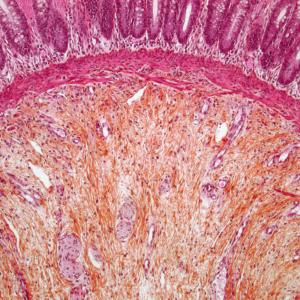Researchers at NYU Langone Medical Center have discovered that mitochondria, the major energy source for most cells, also play an important role in stem cell development—a purpose notably distinct from the tiny organelle’s traditional job as the cell’s main source of the adenosine triphosphate (ATP) energy needed for routine cell metabolism.
Specifically, the NYU Langone team found that blocking the action of the mitochondrial ATP synthase enzyme stalled egg cell development from stem cells in experiments in fruit flies, one of the main organisms used to study cell biology.
In further experiments with the flies, the research team found that ATP synthase was essential to normal stem cell development, directly controlling the growth and maintenance of the inner membranes inside mitochondria, called cristae, as the cells continue to divide and form the specific cell components that make up an egg, or female germ cell.
The study findings are to be published in the journal Nature Cell Biology online April 27.
“Our study results showed that ATP synthase has a new function during stem cell development and specifically for making an egg that is independent of its role to make ATP,” says senior study investigator and cell biologist Ruth Lehmann, PhD, the Laura and Isaac Perlmutter Professor of Cell Biology at NYU Langone and a Howard Hughes Medical Institute investigator.
Moreover, Lehmann says that because ATP synthase energy production is common among all cells that have a nucleus, it is highly likely that its structural role in early mitochondrial development is the same for all mammals, including humans. Indeed, Lehmann, who also serves as director of NYU Langone’s Skirball Institute of Biomolecular Medicine and chair of its Department of Cell Biology, notes that earlier research reports described damaged or immature cristae in several animal species with compromised ATP synthase, but until now, no explanation or evidence existed to link this process to stem cell development.
The discovery is remarkable, Lehmann says, not just for outlining a new role for the mitochondria beyond energy production, but also because it appears that ATP synthase’s role in stem cell development is independent of its power-generating role, first described in the 1960s and subject of the 1997 Nobel Prize in Chemistry.
Experiments by Lehmann and her colleagues found that when any one of 13 key proteins tied to ATP synthase were blocked, egg development was disrupted or stalled. Blocking other enzymes involved in ATP production prior to the work of ATP synthase, however, did not damage egg development.
“Our team plans further investigations into precisely how ATP synthase biologically controls cristae development, and whether other developmental roles are influenced by mitochondria,” says Lehmann.
For the study, which took two years to complete, researchers screened more than 8,000 genes known to be active in the developing fruit fly’s germline, or stem cells usually predestined to become either egg or sperm. Only ATP synthase stood out and was active, even when other enzymes active in ATP production were turned off.
Funding support for the study was provided by the U.S. National Cancer Institute and National Institute of Child Health and Human Development, both parts of the National Institutes of Health. Corresponding federal grant numbers are UL1 TR00038, P30 CA016087, 2P4 OD010949-10A1, F31 HD080380, F32 GM082169, 5RO1 GM062534, and RO1 R37HD41900. Additional funding support was provided by the Boehringer Ingelheim Fonds, and by American Cancer Society grant 121614-PF-11-277-01-RMC.
Besides Lehmann, other NYU Langone researchers involved in these experiments were lead study investigators Felipe Teixeira, PhD; Carlos Sanchez, MS; Thomas Hurd, PhD; and study co-investigator Jessica Seifert, PhD. Additional research support was provided by Benjamin Czech, PhD; Jonathan Preall, PhD; and Gregory Hannon, PhD, at Cold Spring Harbor Laboratory in New York.
Media Inquiries
David March
Phone: 212-404-3528
david.march@nyumc.org

